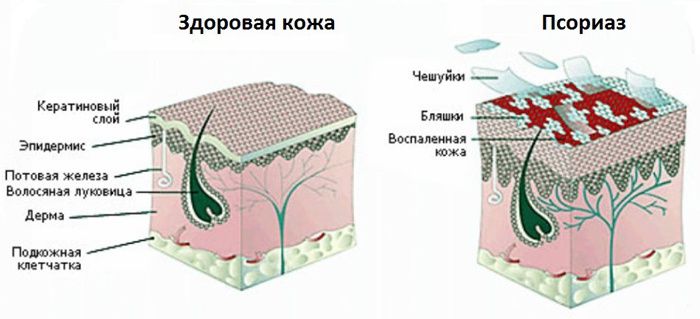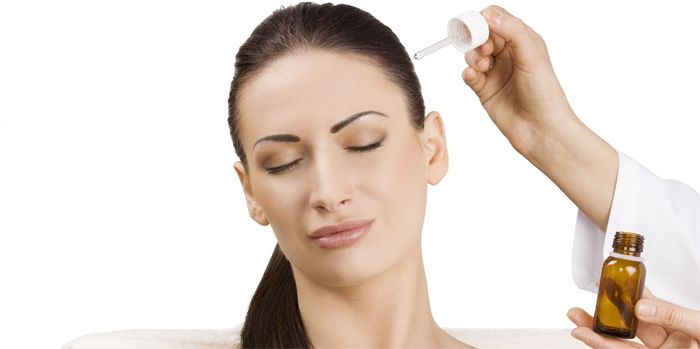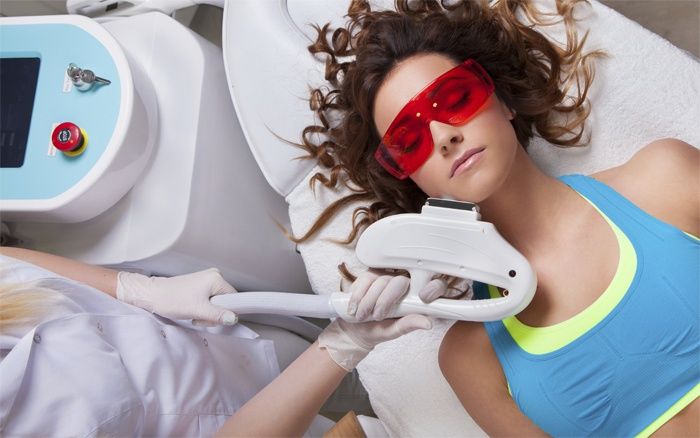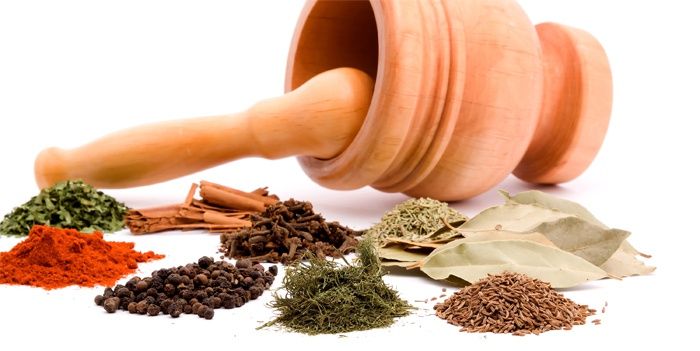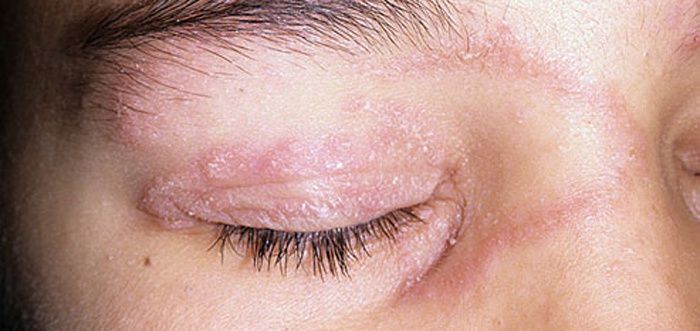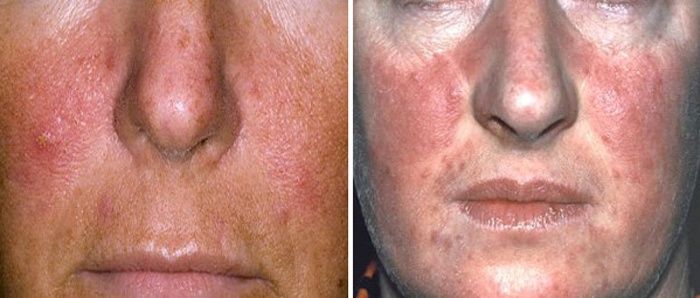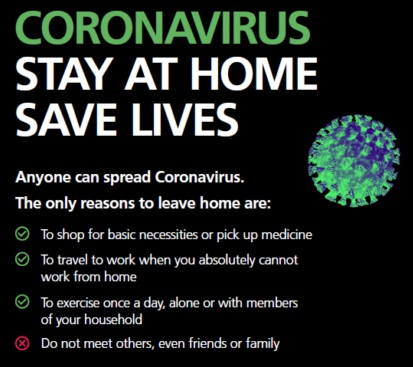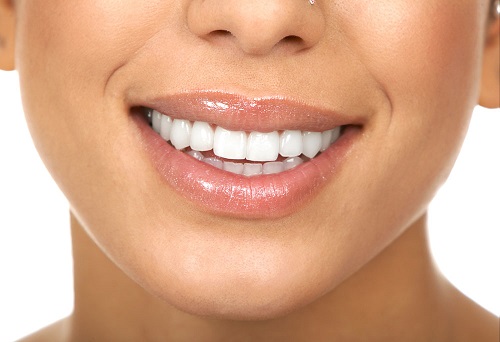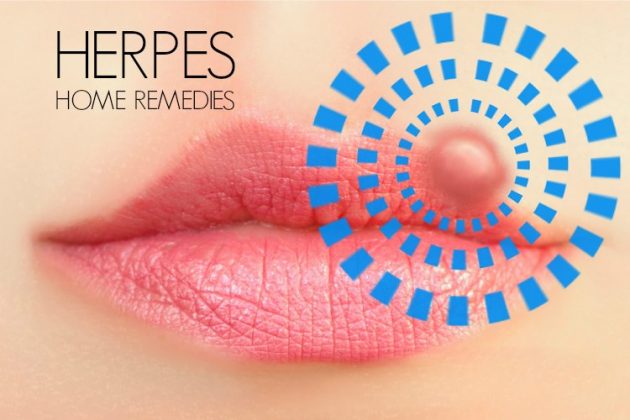Content
- The causes of the disease
- The first signs of psoriasis on the skin of the face
- Stages of the disease and their symptoms
- Diagnostic Methods
- How to treat psoriasis on the face
- Disease prevention
This type of psoriasis is dangerous, first of all, from a psychological point of view. Rashes on the face are not infectious, but cause a feeling of danger among people around. A sick person feels discomfort, avoids companies, stops communicating. There are problems with work, personal life – all this causes suffering, leads to depression. If in other cases the symptoms can be hidden under clothing, then everything is in sight. But this has its advantages. Psoriasis on the skin of the face is more quickly cured by the access of air and the sun. It is important to consult a dermatologist in time.
The causes of the disease
Doctors have been asking this question for a long time, but they have not found a definite answer. Some blame the environment for the disease, others consider heredity to be the cause – both are fair. Psoriasis can occur after taking medications. Causes of skin diseases can be:
- infectious diseases;
- immunity problems;
- stress
- fungal infections;
- endocrine system disorders;
- diabetes;
- metabolic disease;
- allergies
- viral diseases.
The first signs of psoriasis on the skin of the face
This chronic facial skin disease is rare. Psoriasis, or scaly lichen, begins with spots on small areas of the skin. Then small dense dots appear, which increase in size – papules form. Red inflammations on the face grow rapidly, become covered with silver scales, begin to peel off, causing itching. At the first signs of psoriasis, it is better to consult a dermatologist. The disease is serious and requires a competent approach..
Stages of the disease and their symptoms
Psoriasis is developing rapidly. Papules grow, begin to capture a large surface, form plaques on the face. The foci of the disease are located on the eyebrows, in the nasolabial part. Sometimes cover the eyelid, lips, oral mucosa and tongue. Along with the usual form, seborrheic psoriasis develops. It is localized on the sebaceous glands, often behind the ears, on the forehead, near the scalp, the discharge together with papules form yellow crusts.
At different points in the development of psoriasis on the face, there are differences in the external manifestation of the disease. If you carefully scrape the surface of the plaque on your face and remove the scales:
- At the initial stage of the disease, the surface is white, it is also called a stearin stain.
- At the next stage, after scraping, there remains a brilliant bright red skin – terminal film.
- With the further development of the disease, after removal of the film, there appears point bleeding – bloody dew.
There are three stages of psoriasis:
- Progressive. It is characterized by the appearance of new foci of the disease. Plaques affect large areas of the skin, cause itching, peeling.
- Stationary. New papules do not form, old turn blue, begin to dissolve. Peeling and itching are reduced.
- Regressive. Plaques disappear, the skin brightens. Peeling and itching stop.
Diagnostic Methods
Diagnosis of psoriasis on the face begins with an external examination, and confirmation of the disease by its characteristic signs. They find out from the patient if there are any close relatives who have this disease – it is often transmitted at the genetic level. In case of doubt, psoriasis is a fungal disease or candidiasis, do histological analyzes of facial skin tissue. If necessary, to clarify the diagnosis, do blood tests.
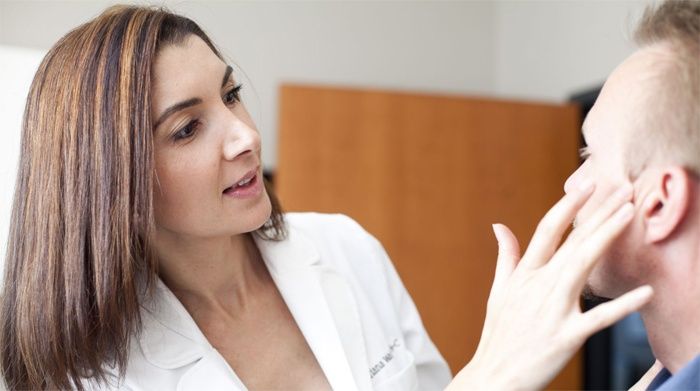
How to treat psoriasis on the face
To cure a facial skin disease, you should consult a dermatologist. By following the recommendations, you can achieve good results. Depending on the stage of psoriasis, you will be prescribed:
- external treatment with ointments, creams, lotions;
- medications to relieve symptoms of the disease;
- medicines for the treatment of diseases that caused psoriasis;
- physiotherapy.
Although psoriasis cannot be completely cured, the healing process can be accelerated. Really achieve long-term remission. An important role in the treatment of facial skin diseases is played by:
- dieting;
- giving up bad habits: smoking and drinking alcohol;
- gentle facial skin care;
- use of folk remedies;
- taking vitamin preparations;
- body cleansing.
Therapeutic diet
Dermatologists pay great attention to psoriasis in the diet. There are a number of products that patients should completely exclude from their diet. First of all, it’s alcohol, fatty foods. Red foods, such as tomatoes, peppers, are prohibited. It is necessary to limit salt intake. It is necessary to refuse:
- smoked food;
- pickles;
- citrus fruits;
- sweets;
- muffins;
- spices;
- Chocolate
- skim milk;
- nuts.
Nutrition for psoriasis should be balanced, contain the necessary elements for the body. To keep the skin clean, you should consume a lot of fiber. Protein in the body supply cottage cheese, beans, egg white, seeds. Do not completely abandon the sweet – it is permissible to use a small amount of raisins and dried apricots. Salads recommend seasoning with vegetable oil.
How to eat during psoriasis? Nutritionists advise to do fasting days once a week, for example, vegetable or kefir. It is useful to include bran, seafood in the diet. There should be plenty of fruits and vegetables on your table. All greens are welcome. In case of psoriasis, it is recommended to cook porridge, preferably in water. Dairy products are useful. In addition, the following should be included in the diet for psoriasis:
- lean meat: veal, poultry;
- fish
- sea kale;
- pumpkin;
- buckwheat, pearl barley;
- any kind of cabbage.
Proper facial skin care
In the case of psoriasis, which appeared on the skin of the face, it is necessary to observe the rules of hygiene and properly care for the skin. This applies to men and women. Certain rules must be observed:
- use facial moisturizers;
- exclude decorative cosmetics;
- do not use scrubs;
- wash your face with sensitive skin care products;
- avoid direct sunlight;
- protect your face from wind and dust;
- use sunscreen in the summer;
- men change the machine for an electric shaver.
Drug therapy
How to treat psoriasis on the face? First of all, do not do it yourself. Psoriasis is a serious disease and requires a professional and comprehensive approach. Only a doctor will prescribe the necessary drugs for external and internal use. Will explain the dosage and dosage regimen. This will be done taking into account your symptoms, stage and severity of the disease. In addition to topical products and tablets, one should not forget about vitamins.
If rashes on the face with psoriasis are at an initial stage or have a mild form, then ointments and creams are used. They act in different ways:
- Kartalin ointment softens plaques, facilitates the removal of scales;
- Psorilom cream accelerates healing, eliminates itching;
- Naftalan ointment reduces inflammation, anesthetizes;
- Elokom cream reduces the size of papules;
- the hormonal drug “Triderm” stops itching and inflammation;
- Acrustal cream contains vitamin D, stimulates the skin recovery process.
Oral medications affect the external manifestations of psoriasis, and systemically treat the entire body. They solve such problems:
- “Folic acid” helps to cleanse the skin, smooth pigmentation;
- “Laminin” restores cells, promotes collagen production;
- Suprastin reduces itching;
- Novopassit calms the nervous system;
- “Lecithin” reduces relapse;
- “Methotrexate” stops the cell growth process;
- “Psorilom” relieves itching, stops inflammation;
- vitamin complexes are needed for general support.
Physiotherapy
An important place in the treatment of psoriasis is physiotherapy. Assign it at a stationary stage, when the acute form of the disease is passed. It is carried out under the supervision of a doctor, because some procedures have contraindications or are difficult to tolerate. Physiotherapy for diseases on the skin of the face is aimed at solving problems:
- electrosleep normalizes the mental state of the patient;
- ultraviolet radiation improves the surface layer of the skin, promotes prolonged remission;
- radiotherapy acts anti-inflammatory, reduces itching.
PUVA therapy is used with caution in the treatment of psoriasis. It is used in the most severe cases and has contraindications, as it contributes to the appearance of neoplasms. Physiotherapy procedures are popular in the treatment of psoriasis:
- ultrasound that reduces pain, inflammation, itching;
- metabolism activating magnetotherapy that improves cell regeneration;
- laser therapy – a local effect on the focus of inflammation, indispensable in the treatment of eyelids.
Folk remedies
The treatment of psoriasis at home with folk remedies must be agreed with the doctor so that it becomes an addition to the main methods of healing. Alternative drugs can relieve inflammation in the disease, increase immunity, heal the skin. The use of Dead Sea salt gives excellent results in the treatment of rashes on the face. It is added to thermal water and the face is sprayed with the composition. You can make compresses: moisten a napkin in warm saline and apply it to your face.
In the treatment of the disease, birch tar and machine solidol are very effective. They are carefully applied to the affected areas, kept for twenty minutes and washed off with soap. After this, apply a moisturizer. Essential oils act well on the foci of inflammation in psoriasis. They are applied pointwise to the surface of the papules and incubated for 7 minutes, then the excess is removed with a napkin. Oil helps with the disease:
- juniper;
- Coconut
- jojoba;
- lavender;
- evening primrose.
You can rub vaseline into the skin, mixed in equal parts with burnt rosehip branches. Helps with psoriasis rubbing the face with a solution – a glass of water and a large spoon of drinking soda. Immunity teas with raspberries, viburnum, wild rose. An excellent result with a facial skin disease gives applications of home ointment. It is mixed and kept for three days in a dark place, prepared according to the recipe:
- a spoonful of Kalanchoe juice;
- a large spoon of eucalyptus oil;
- teaspoon of honey.
Disease prevention
If you have undergone treatment for psoriasis and the main manifestations of the disease have disappeared, this does not mean that the disease has been completely cured. Persistent remission may come, which will last for many years. But at some point, for an unspecified reason, the disease may resume. To prevent this from happening, you should do the following:
- avoid stressful situations;
- strictly follow a diet;
- protect face skin from overheating and frost;
- take vitamins A and D;
- use skin moisturizers;
- monitor its cleanliness;
- prevent skin damage.
Very often the forehead is affected by psoriasis..
Often, papules with a disease on the face cover the area of the eyebrows and eyelids.
Extensive psoriasis of the nasolabial part, chin and lips causes a lot of trouble to the patient..
This is what the progressive stage of psoriasis looks like in the nose and under the eyes.
The manifestation on the face of seborrheic psoriasis.






